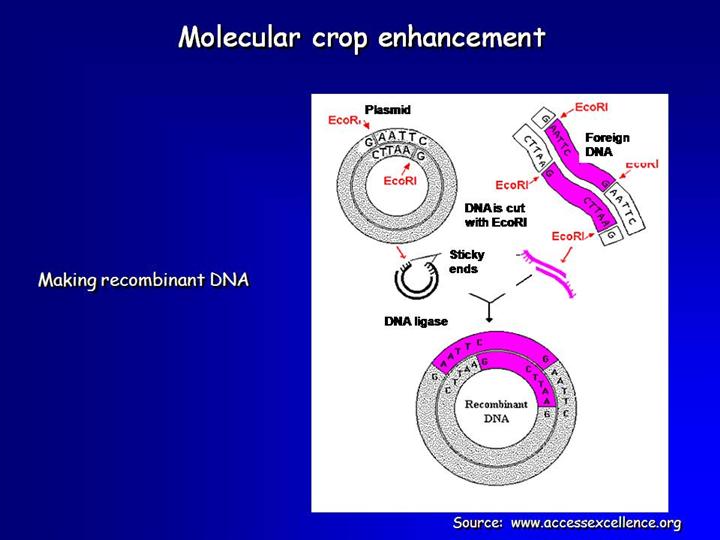| front |1 |2 |3 |4 |5 |6 |7 |8 |9 |10 |11 |12 |13 |14 |15 |16 |17 |18 |19 |20 |21 |22 |23 |24 |25 |26 |27 |review |
 |
Here’s a thumbnail sketch of recombinant DNA technology. All organisms, including bacteria, have genes. The genes are particular stretches of the organisms genetic material, usually DNA (deoxyribonucleic acid), but sometimes RNA (ribonucleic acid). The genes are arranged on long structure, called chromosomes, that consist of the DNA packaged in protein. In addition to their big chromosome, bacteria have tiny circular chromosomes called plasmids. Bacteria also make a large array of DNA-cutting enzymes, called restriction enzymes (the EcoRI in the illustration is a restriction enzyme), that cut DNA in a way that leaves it with overhanging (sticky) ends. You can think of the two strands of the plasmid as two strips of velcro. If you leave an overhang at each end you can attach in another piece of velcro of a different color. The purple pieces in the diagram represent DNA taken from a different organism, say a corn plant or a fruitfly. So now you have a hybrid molecules and this is called the recombinant DNA molecules, pictured at the bottom. There’s one more actor, ligase, which is an enzyme that seals the junctures shut. Now the important point is that these little plasmids replicate in bacteria, making many copies of themselves. Source: www.accessexcellence.org |